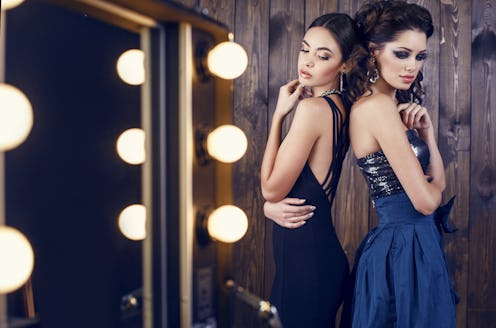
It's often debated whether standards of beauty are social constructs or not; in case you've ever wondered how much other people's opinions affect how hot we think someone is, though, here's some research that might be worth reading. Two scientists — Haiyang Yang of Johns Hopkins and Leonard Less of the National University of Singapore — recently published the results of a series of studies they conducted in Advances in Consumer Research, and the evidence they uncovered points to a pretty clear answer: That is, “a lot.”
The paper, which bears the title “Instantaneously Hotter: The Dynamic Revision of Beauty Assessment Standards” (who says science can't be catchy?), was first presented at the 2014 Association of Consumer Research conference; you can read the extended abstract here, but for the curious, here's the short version. Ready to dive into the crazy phenomenon of “hot or not?”
The Experiment:
The researchers conducted three different studies to examine how other people's opinions affect what we think about beauty. Here are the in-a-nutshell versions of each of them:
- Study 1: The researchers gathered a whopping 800,000 physical attractiveness evaluations made by more than 60,000 users of an unnamed online dating site. Each participant was shown a randomly selected photo of someone and asked to rate them on a scale of one to 10 — with one being “Ugh, no!” and 10 being “Really, really ridiculously good looking.” After the participant rated the photo, he or she was then shown the average of all the other ratings that photo had received from other users. Then the participant was shown a new photo of a new person. The whole process repeated until the user decided they'd had enough and left the site.
- Study 2: The paper doesn't specify how many people participated in the second study; this is somewhat unfortunate, as knowledge about the sample size and demographic is kind of important when looking at stuff like this. In any event, though, the researchers assigned the participants to one of three conditions: A “no-info” condition, an “info-before” condition, and an “info-after” condition. Each group of participants rated the attractiveness of a large set of photos of either men or women — but with a catch: The “no-info” folks evaluated them in a random order; the “info-before” people were given each photo's average hotness ratings before evaluating it; and the 'info-after” group rated a photo, then received the average hotness rating before being shown the next photo in the set.
- Study 3: Again, there's no info available about the participants — just something to bear in mind. In this study, the researchers tweaked the average attractive ratings available for each photo: Some of them were given their true rating, while others were given a randomly altered one. Participants were again asked to evaluate the photo sets on their hotness before receiving each photos' average hotness score; only half of the participants, though, were given the true ratings. The other half were given the altered ones.
The Results:
You can probably guess what the researchers found, right? In the first study, the more exposure people had to each photo's average rating — that is, the more access they had to what everyone else thought about any given photo — the more their judgment of the next photo shifted toward “the average aesthetic taste.” In the second study, meanwhile, the “no-info” group differed more and more from the average aesthetic taste with each photo they rated, developing their own standards of beauty independently. Folks in both the “info-before” and “info-after” groups, meanwhile, both shifted more and more towards the “norm” in their views of hotness the more photos they rated. The third study showed similar results; participants who were exposed to the altered ratings moved away from the actual average the more photos they evaluated.
The Takeaway:
The conclusion the researchers arrive at is that what everyone else thinks definitely affects how attractive we perceive someone to be. Taken this way, the results of the study support the idea that beauty is a social construct; when we're exposed to what others around us think, we internalize those notions and perpetuate them.
But…
Jesse Singal at The Science of Us brings up an interesting point: Other explanations might exist for why all those hotness ratings lined up with themselves. Writes Singal:
“Still, the fact that the "influence" in this study is so vague and anonymous gives me pause. What if you ran a similar experiment where people judged how reliable a toaster seemed based on a photo and description of it? Or a car? We know that people are influenced by weird stuff when they're asked to make numerical guesses and have access to other numerical information to help guide those guesses. For instance, there's the so-called anchoring effect: If you say to one group of people "There are more than 200 million people in the U.S. How many do you think there are?" and to another "There are more than 300 million people in the U.S. How many do you think there are?" the latter group will probably generate higher estimates.”
It's possible, Singal suggests, that the explanation could have “more to do with quirks about the psychology of numbers than with actual standards of beauty.”
What all this is getting at is that we have a correlation, but we haven't discovered the causation of it yet. Me? I'm pretty sure the researchers are at least partially correct in their analysis; more research needs to be done in order to get to the bottom of it, though.
Food for thought, no?
Images: Fotolia; Wifflegif (3); effyeahscotus/Tumblr; Giphy